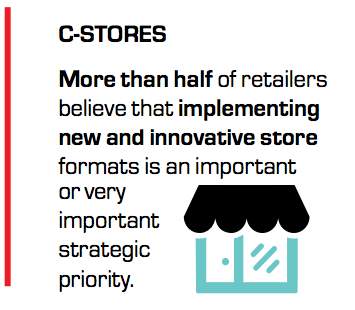

The retail industry is experiencing a rapid transformation driven by shifting consumer behaviors, technological advancements, and intensifying competition. In this dynamic and ever-changing landscape, delivering a seamless and exceptional customer journey has become imperative for retail businesses to thrive. However, numerous obstacles can impede the smooth progression of the customer journey, leading to diminished customer satisfaction, loyalty, and business growth. This whitepaper aims to delve into three big obstacles facing the customer experience within the retail industry. By examining these challenges faced by retailers and presenting practical strategies to overcome them, this whitepaper seeks to empower retailers to enhance the overall customer experience and cultivate robust and longlasting relationships with their customers.
CHALLENGE #1 | THERE IS A GAP BETWEEN INTENTION AND IMPLEMENTATION
Fear of Failure and Uncertain ROI
Legacy Systems and Infrastructure
SOLUTION
SOLUTION
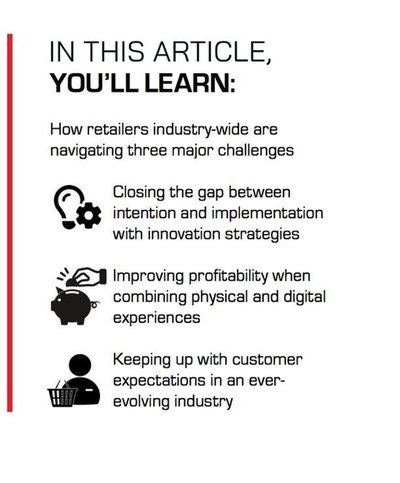
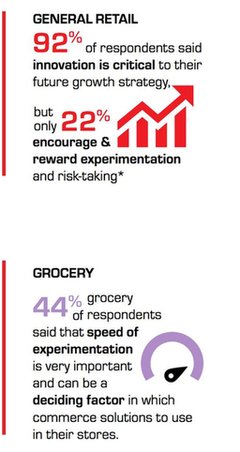
Innovation has become a key driver of success in the ever-evolving retail landscape. With new technologies and consumer demands reshaping the industry, retailers are facing challenges in adopting innovative strategies to stay relevant and competitive. However, despite the potential benefits, many retailers find themselves hesitant when it comes to implementing innovation strategies.
Due to their hesitancy, many find it challenging to keep up with shifting customer wants and compete in a market that is developing quickly. But what are some of those hesitations?
The two primary reasons retailers hesitate to embrace new innovation strategies are the fear of failure and uncertain ROI. Implementing innovative ideas involves a certain level of risk, and failure can lead to financial losses and a damaged reputation. They may be hesitant to take the leap, especially if they have limited resources or have experienced previous unsuccessful attempts at innovation. This fear often creates a culture of risk aversion, making it difficult for new ideas to gain traction. Experimentation can be especially difficult due to the nature of retail being customer-facing, where failure becomes public.
Additionally, retailers operate in a highly competitive landscape where every investment regarding return on investment (ROI) must be justified. New innovation strategies often involve upfront costs without immediate tangible benefits. Retailers may hesitate to invest in unproven technologies or untested strategies, fearing that long-term impact on ROI may not justify the initial investment.
Establish new ways to pilot ideas and conduct testing. Implementing technology to collect and analyze data from experiments will enable you to make well-informed decisions about your overall innovation strategy. Technology allows for greater flexibility and adaptability in testing and refining your innovation strategy. This flexibility helps you respond to market changes, evolving customer needs, or emerging trends, ensuring your innovation strategy remains relevant and competitive.
Work with innovation partners that help navigate between your current structure and the structure you want. Many retailers are opting to work with partners that can integrate with legacy systems to avoid adding extra time and resources they may not have for experimentation.
Another factor contributing to retailers' hesitation is the presence of legacy systems and infrastructure. Many established retailers have invested heavily in their existing technologies, such as point-of-sale systems, inventory management tools, and supply chain systems. There may be concerns about disruptions to their existing operations, technical compatibility issues, employee re-training, or the need for significant investments to upgrade or replace outdated infrastructure.
Large retailers, particularly those with well-established systems and processes, often need help with organizational inertia. Long-standing practices and hierarchical structures can create resistance to change, making it challenging to implement new innovation strategies. Decision-making processes may be slow and bureaucratic, hindering the flexibility required to embrace new technologies and ideas.
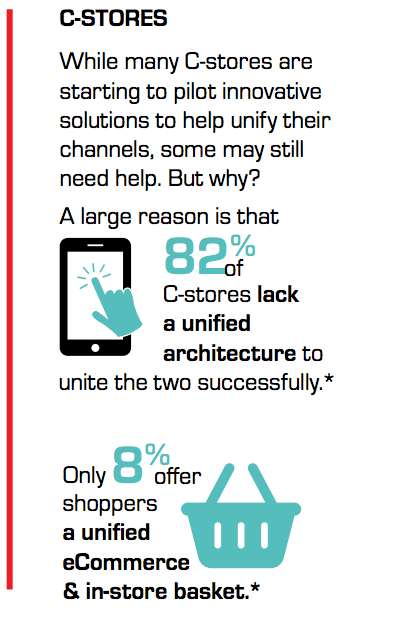
Implementing new innovation strategies requires adequate resources, both in terms of capital and talent. Many retailers, particularly smaller ones, may need more financial resources and help to allocate budgets for innovation initiatives. Additionally, the skills and expertise necessary to drive innovation may not be readily available within the organization. Hiring new talent or partnering with external experts can be costly, further exacerbating the hesitation to pursue innovation.
Offer training and development programs to equip employees with the necessary skills and knowledge to adapt to and embrace innovation. Invest in educational resources, workshops, and training sessions to foster a learning environment where employees feel supported and confident in adopting new technologies and practices. Address any knowledge gaps or concerns that may be contributing to resistance.
While innovation is essential for retailers to thrive in today's dynamic market, the hesitation to implement new innovation strategies is understandable. However, retailers must recognize that embracing innovation is not just an option but a necessity in the face of evolving customer demands and technological advancements.
By fostering a culture of innovation, allocating adequate resources, prioritizing customer needs, encouraging experimentation, and promoting cross-functional collaboration, retailers can bridge this gap and unlock the true potential of innovation in the dynamic retail landscape.
CHALLENGE #2 | COMBINING PHYSICAL AND DIGITAL CUSTOMER EXPERIENCES TO IMPROVE PROFITABILITY
Implementing New Store Formats
Lack of Resources and Expertise
Ensuring Profitability
SOLUTION
SOLUTION
SOLUTION
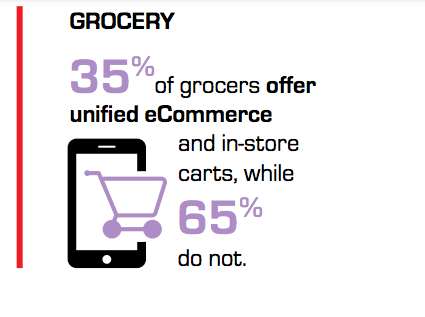
Combining physical and digital customer experiences while maintaining profitability can present various business challenges. It requires careful planning, strategic execution, and ongoing adaptation. Shoppers want to move between touchpoints – digital and physical – seamlessly. In response, retailers need to knock down the walls separating their channels, enabling shoppers to easily move from online to store, mobile, home delivery, and beyond.
Changing a store format and investing in new business models requires time and effort, but it also opens up new opportunities and promotes business growth. You need the ability to scale and evolve regardless of whether your customers choose mobile ordering, self-checkout, contactless payments, curbside delivery, product-recognizing kiosks, or any other shopping or payment method. Customizing the shopping experience for the individual customer means retailers can increase engagement, loyalty, and sales by taking an existing approach they are familiar with and applying it in a way they have not done before.
Create an in-store eCommerce personalization strategy. Implementing services such as loyalty and promotional programs, digital wallets for alternative payments, and convenient self-checkout stations is a great way to combine the physical and digital shopping experience. Customizing experiences for the individual customer means you can increase engagement, loyalty, and sales by taking an existing approach that customers are familiar with and applying it in a way they have not seen before. The more personalized you can make a customer experience, the more likely a customer will return. Customers want to shop at stores they know will have what they need and provide an incentive specifically for their interests. So, from products to technology, consider it all as part of the customer experience to build a relationship with each shopper.
Use a top-notch services provider. A robust services plan can mean the difference between long lines of frustrated shoppers and customers breezing through checkout and interaction points. The best service providers are an extension of your team, trusted partners who take the time to understand your business, goals, and strategy and use expertise to guide you where you want to go. From deploying new self-checkout solutions to routine day-to-day tasks or even comprehensive wall-to-wall maintenance, partnering with a service provider helps ensure that your systems maximize your operations to benefit your business and your customers. With the right retail technology, you will be equipped with the solutions you need today to deliver the experiences your customers expect. You’ll be prepared to adapt and add to that technology without redoing your entire infrastructure.
Overcoming these challenges requires a strategic and holistic approach. It is important to have a clear vision, invest in the right technologies, foster crossfunctional collaboration, and continuously monitor and adapt your strategies based on customer feedback and data analysis. By addressing these challenges proactively, businesses can successfully combine physical and digital experiences while maintaining profitability and delivering exceptional value to customers.
Integrating physical and digital experiences may involve additional costs, such as technology investments, infrastructure upgrades, and staff training. So, the question becomes how do you carefully balance these costs with the revenue generated from the improved customer experiences? Businesses must ensure that the investments made contribute to long-term profitability and customer loyalty.
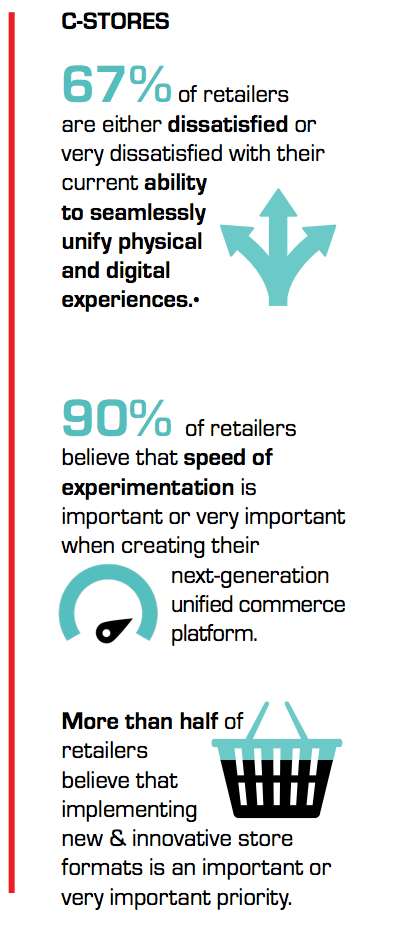
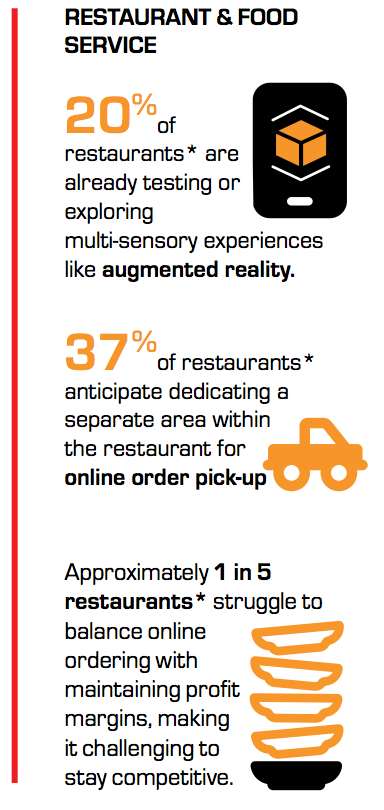
By prioritizing customer-centricity and constantly adapting to evolving expectations, retailers can create a loyal customer base and secure a prosperous future for their business. No matter what industry you’re in, customers will always want to see your business changing and adapting to what they want. That is especially true for retail. To keep up with customer expectations in retail, it's essential to stay up to date with the latest trends and technologies.
When it comes to a customer-centric approach, it’s essential to prioritize the needs, expectations, and preferences of customers throughout their entire shopping journey. A few examples are:
- Customer Journey Mapping: Customer journey mapping involves visualizing and understanding the various touchpoints and interactions a customer has with you. It helps identify pain points, opportunities for improvement, and areas where you can deliver a more seamless and personalized experience.
- Personalization: With the rise of data analytics and AI technologies, personalization has become a key differentiator in the retail industry. By leveraging customer data, you can offer tailored recommendations, personalized offers, and individualized experiences.
- Cross-Channel Integration: Customers expect a seamless experience across various channels, including physical stores, online platforms, mobile apps, and social media. This could involve enabling customers to browse and purchase products through multiple channels, providing consistent product information and pricing, and facilitating convenient fulfillment options (e.g., Grab-n-Go and self-checkout kiosks).
CHALLENGE #3 | KEEPING UP WITH CUSTOMER EXPECTATIONS
Increase the Speed of Experimentation
Put the Customer First
SOLUTION
SOLUTION
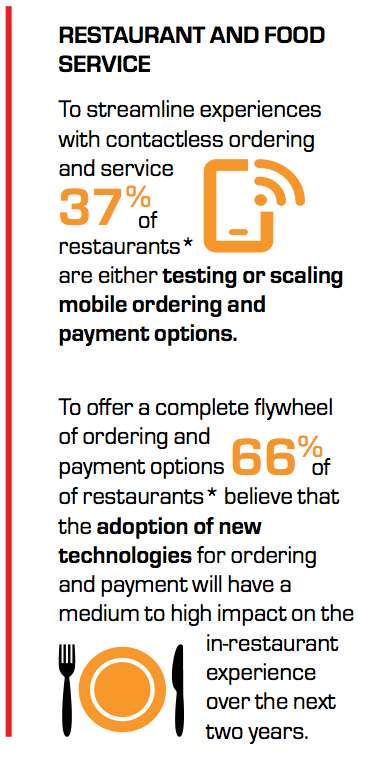
In today's competitive retail landscape, meeting and exceeding customer expectations is vital for long-term success. By staying attuned to changing customer preferences, embracing technological advancements, and offering personalized experiences, retailers can build customer loyalty, gain a competitive edge, and drive business growth. Understanding and meeting customer expectations is not just a trend; it is an essential strategy for retailers to survive and thrive in the dynamic world of retail.
The phrase "keep up with the speed of retail" is a common enough phrase for retailers but in reality, it should probably be closer to "keep up with the speed of customer expectations." More often than not, the speed of experimentation is a leading obstacle to improving the customer experience. So many platforms and technology partners must be more flexible and adaptable to allow fast experimentation. The modern customer is more informed, connected, and demanding than ever before. They expect personalized experiences, seamless interactions, and convenient options across multiple touchpoints. Retailers that understand and actively respond to these evolving expectations stand a better chance of thriving in this competitive landscape.
As the retail industry becomes more competitive, it's crucial to stay ahead of the curve by experimenting with new strategies and tactics faster than the competition. By testing new ideas quickly and without significant investment or risk, retailers can identify what does and doesn't work early on and make data-driven strategic decisions. When your business model is adaptable and scalable, you don't have to worry about the cost of ripping and replacing your entire technology infrastructure when it's time to implement new innovation strategies. A broad range of retail technology designed with the future in mind can make that possible.
Use tools like A/B testing and machine learning algorithms to determine how best to evolve your business to fit customer needs using real-time data. When you have the freedom to experiment at the speed of your business you also have the freedom to fail fast and move on to finding other solutions worth your time, money, and effort.
Keeping up with customer expectations in retail requires a proactive approach. Conducting regular market research, embracing technology, providing excellent customer service, offering convenient and flexible options, and creating an engaging in-store experience can help you meet and exceed customer expectations, leading to increased loyalty and improved profitability.
Retailers can reap several benefits by prioritizing customer satisfaction and aligning their strategies with changing customer preferences. First and foremost, meeting customer expectations enhances satisfaction levels, leading to increased customer loyalty and advocacy. Satisfied customers are more likely to become repeat customers, driving up their lifetime value and contributing to long-term business success.
Staying up to date on customer expectations is also a key driver of competitive advantage. Retailers can differentiate themselves from competitors by staying attuned to industry trends and technological advancements. They can adopt innovative solutions, such as seamless omnichannel experiences, personalized recommendations, and efficient customer service, that create positive customer experiences. This attracts new customers and fosters customer loyalty, as they perceive the retailer as being in tune with their needs.
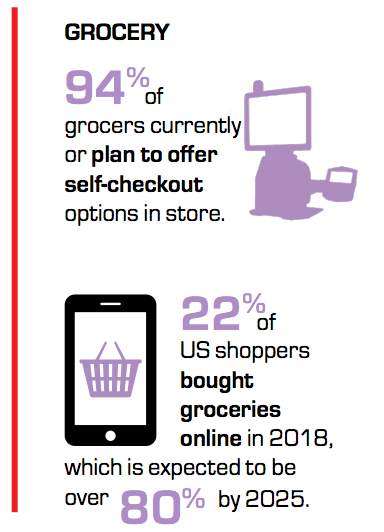
FINAL THOUGHTS
In conclusion, the retail industry is undergoing a paradigm shift where customer expectations reign supreme. Retailers that prioritize understanding and meeting these expectations are better positioned to enhance customer satisfaction, drive loyalty, gain a competitive edge, and increase their overall business success. By embracing a customer-centric mindset and continuously adapting to evolving expectations, retailers can forge strong, long-lasting relationships with customers and ensure their business thrives in an ever-changing retail landscape.
Customers value great shopping experiences. Whether the customer values speed and convenience or the space to explore, compare quality, and discover something new, retailers must ensure that customers get that great experience. The customer journey isn’t linear, and shopping shouldn’t be either. Instead of strictly separating their brick-and-mortar from their digital channels, retailers should make it as easy as possible for shoppers to move seamlessly between all channels.
The retail landscape continues to evolve with emerging technologies, shifts in consumer behavior, and new market dynamics. Retailers who proactively embrace these changes and adjust their strategies accordingly position themselves as industry leaders, ensuring they remain relevant and competitive in the long run. Moreover, retailers can future-proof their business by adapting to changing trends and customer expectations. It is essential for retailers to view keeping up with customer expectations as an ongoing journey rather than a one-time task. Regularly collecting and analyzing customer feedback, leveraging data analytics, and monitoring industry trends will help retailers stay ahead of customer expectations and drive continuous improvement. This customer-centric approach fosters a culture of innovation and adaptability within the organization, allowing retailers to deliver exceptional experiences that resonate with customers.
Click to Read the full Customer Journey White Paper
This study was conducted in Fall 2023 as the fourth annual installment of a grocery ecommerce study that Ipsos has conducted since 2020. This study was designed to differentiate between three different fulfillment methods of obtaining grocery orders: In-Store Pick-up, Curbside Pickup and Delivery.
The approach was 2-pronged:
- Step 1: Ipsos conducted a 7-minute survey of 1,200 Americans to understand which elements of grocery pick-up and delivery are most important to consumers. The survey was conducted October 25, 2023. A Key Drivers Analysis was conducted to identify the top drivers of “Likelihood to Use Brand Again for grocery ecommerce” using Ipsos’ proprietary Ipsos Bayes Net (IBN) modelling technique.
- Step 2: Ipsos then deployed their panel of trained mystery shoppers to measure brand performance across a specific set of elements related to grocery pick-up and delivery. Roughly 33 mystery shops per method (In-store Pick-up, Curbside Pick-up, Home Delivery) were conducted for each qualifying retailer. Retailers were only shopped for methods they offered, so in some cases sample was redistributed appropriately across offered methods. Geographic representation was ensured across 4 regions (West, Midwest, Northeast, South). Mystery shops were fielded between October 23 – November 17, 2023. The relative importance of each service element ascertained from Step 1 was applied as a weighting factor to the Mystery Shopping results.
For a full copy of the results or to participate in Ipsos’ next ecommerce study (coming Fall 2024), contact Silvana Daehn at silvana.daehn@ipsos.com.
